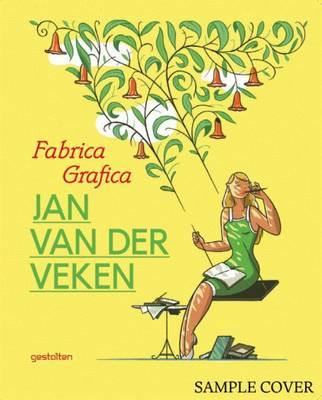
- Afhalen na 1 uur in een winkel met voorraad
- Gratis thuislevering in België vanaf € 30
- Ruim aanbod met 7 miljoen producten
- Afhalen na 1 uur in een winkel met voorraad
- Gratis thuislevering in België vanaf € 30
- Ruim aanbod met 7 miljoen producten
Zoeken
€ 29,70
+ 59 punten
Omschrijving
One of the most distinctive and sought-after Illustrated bys from the motherland of comics: Belgium. In Belgium, comics and illustration are as fundamental to the country's cultural identity as fashion, good food, and films are to the French. Illustrated by Jan van der Veken has developed a personal technique that melds the "international style," art deco, and Belgium's comics tradition into a visual language that is both contemporary and timeless. Though some of his work might seem simple or even naïve at first glance, it is always thought through to the last detail. Van der Veken works with a limited color palette and uses lines sparingly. He creates his own typefaces in the style of the 1920s or 1950s. To give structure to the individual visual elements in his work, he often uses an isometric perspective --similar to that used by the best-known designers of the Bauhaus era. Influenced by Hergé's iconic "atom style" and ligne claire, van der Veken's book covers, posters, and Edited byial illustrations for international publishing houses and magazines such as the New Yorker have succeeded in capturing the mid-twentieth-century's rational yet pioneering spirit. In his work, he bridges the gap between today's lifestyle, design, and graphics and the timeless look of the masters of Belgian comics and illustration. Despite the pleasantly anachronistic accents set by work clearly inspired by classical modernism, van der Veken does not hesitate to explore very current themes including sensory overload in our digital age; brands, patents, and industrial espionage; medical ways to fight heart problems; reaching the end of the career ladder; and attacks on the legal system. The fact that van der Veken is visually anchored in a time after World War II, in which many aspects of today's world were mere dreams of the future, helps him to disarm controversial topics with charm and the wink of an eye without ever seeming to make fun of them, trivialize them, or be presumptuous. Given this achievement, we can all learn a lot from Belgians as masters of visual communication in general and from Jan van der Veken in particular --a topic explored in further detail in the book's introduction by the respected Belgian Illustrated by ever Meulen.
Specificaties
Betrokkenen
- Auteur(s):
- Uitgeverij:
Inhoud
- Aantal bladzijden:
- 128
- Taal:
- Engels
Eigenschappen
- Productcode (EAN):
- 9783899554984
- Verschijningsdatum:
- 20/08/2013
- Uitvoering:
- Hardcover
- Formaat:
- Genaaid
- Afmetingen:
- 216 mm x 264 mm
- Gewicht:
- 757 g

Alleen bij Standaard Boekhandel
+ 59 punten op je klantenkaart van Standaard Boekhandel
Beoordelingen
We publiceren alleen reviews die voldoen aan de voorwaarden voor reviews. Bekijk onze voorwaarden voor reviews.








